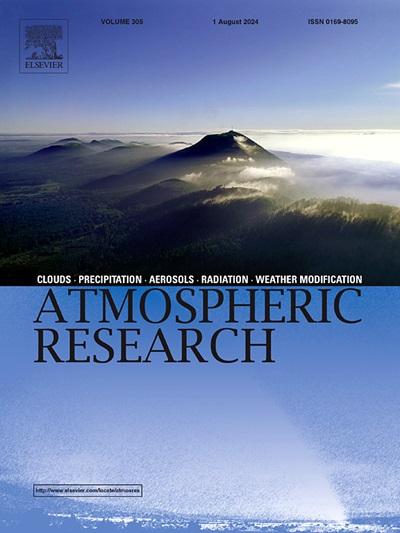Positive surface air temperature trends in a subarctic region: Analyzing the changes in dominant periodic components and energy budget
IF 4.5
2区 地球科学
Q1 METEOROLOGY & ATMOSPHERIC SCIENCES
引用次数: 0
Abstract
Over the past few decades, global warming has significantly impacted permafrost regions, reflecting the amplification in Arctic temperature changes. To better understand climate variability and the changes in permafrost regions, in this study, we examined the changes in the surface air temperature (SAT) in the Republic of Sakha (Yakutia, Russia) from 1971 to 2022. The data from 18 meteorological stations were considered to assess the SAT trends, percentage change (PC), and dominant periodic components across the region. Additionally, the trends of the snow depth (SD) and energy budget components (EBCs), including the net radiation (NR) and latent and sensible heat (LH and SH, respectively), were investigated to elucidate the possible reasons for the SAT trends. The results confirmed a significant increase in the SAT at all stations at both the monthly and seasonal timescales. The monthly SAT trends ranged from 0.002 °C/month to 0.007 °C/month, with considerable variations in the autumn and spring seasons. The dominant periodicity components that affected the SAT monthly trends were the 16- and 32-month across all the stations. For individual seasons, the 4- and 8-year periodic components were identified as the most dominant periodic components to affect the SAT, EBC, and SD trends. Our study can serve as a foundation for future investigations on the changes in dominant periodic components and energy budgets in subarctic regions due to global warming, thereby supporting the ongoing efforts toward climate change mitigation.
求助全文
约1分钟内获得全文
求助全文
来源期刊

Atmospheric Research
地学-气象与大气科学
CiteScore
9.40
自引率
10.90%
发文量
460
审稿时长
47 days
期刊介绍:
The journal publishes scientific papers (research papers, review articles, letters and notes) dealing with the part of the atmosphere where meteorological events occur. Attention is given to all processes extending from the earth surface to the tropopause, but special emphasis continues to be devoted to the physics of clouds, mesoscale meteorology and air pollution, i.e. atmospheric aerosols; microphysical processes; cloud dynamics and thermodynamics; numerical simulation, climatology, climate change and weather modification.
 求助内容:
求助内容: 应助结果提醒方式:
应助结果提醒方式:


